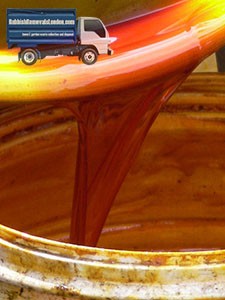Biofuels are the way of the future. Generating quality fuels from organic waste could have seemed technically impossible twenty or so years ago, but the realities the world is faced with have made biofuels a very real thing. First on the scene was production of octane-based fuels from sugar cane and similar plants. Some Latin American countries have been producing such fuels since the technology has been invented basically. With the advancements of biofuel technology, other types of fuel could also be produced using organic waste. Cetane based fuels (diesels) are now produced using waste oil products. One of the latest additions in the family of biofuels is organically derived liquefied fuel gasses, produced through highly advanced technology, with relatively little use of chemicals. At this stage though, many biofuels are still mixed with fossil fuels derived and refined in the traditional way as some of the biofuel examples don’t have the same strength and purity as their fossil counterparts.
At the moment, Indonesia is organising the construction of a highly advanced biofuel refinery installation which when ready will produce energy from palm oil waste. Palm oil is the common cooking oil in most of Southeast Asia, therefore waste palm oil is readily available. Even if supply of waste palm oil runs low in the country, authorities can relatively easy secure and import similar waste from neighbouring countries. The new installation is supposed to be highly efficient, even self-sustained to an extent as it will be constructed in close proximity to an actual palm oil refinery and production site operated by one of the companies responsible for the construction of the waste to energy plant. Talking about reduced rubbish removal costs – these guys have got it made.
 At the moment, the palm oil refinery and production site is powered by diesel generators – definitely not an ecofriendly way to power up a factory. The upcoming waste to energy plant will use fermented palm oil waste in order to feed the production process of biogas. The diesel generators will eventually be removed and replaced with gas turbines, producing power for the plant’s needs. The new gas turbines will be powered by, yes you guessed it – the biogas produced next door.
At the moment, the palm oil refinery and production site is powered by diesel generators – definitely not an ecofriendly way to power up a factory. The upcoming waste to energy plant will use fermented palm oil waste in order to feed the production process of biogas. The diesel generators will eventually be removed and replaced with gas turbines, producing power for the plant’s needs. The new gas turbines will be powered by, yes you guessed it – the biogas produced next door.
The biogas plant will use a production technology known as anaerobic digestion. The anaerobic system allows for more effective mixing of solid and sludge feedstock (the term describes the waste material fed into the biofuel production system). Anaerobic systems allow for increased fuel production as solid waste is broken down quicker which makes everything more efficient i.e. more fuel produced in shorter time. The beauty of the new production plant is that refuse or residue from the biogas production process is actually non-toxic, better still – residue is actually good for soil and will be used effectively as fertiliser/nutrient supplement in agriculture. The residue is actually a liquid effluent which can be irrigated directly onto arable land. The effluent itself can be further refined so it becomes a higher quality soil supplement. The biofuel plant is expected to be in operation by end of twenty sixteen.

